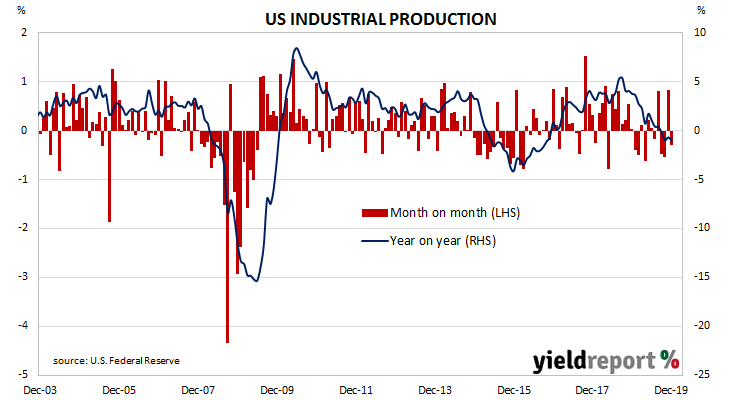The Federal Reserve’s industrial production (IP) index measures real output from manufacturing, mining, electricity and gas company facilities located in the United States. These sectors are thought to be sensitive to consumer demand and so some leading indicators of GDP use industrial production figures as a component.
The latest figures indicate a downtrend which began in late 2018 has continued.
According to December’s figures released by the Federal Reserve, US industrial production fell by 0.3%, less than the flat result which had been expected and a distinct drop from Novembers 0.8% increase. On an annual basis, the growth rate returned to -1.0% after having increased to -0.7% in November.
According to Westpac macro strategist Tim Riddell, “the tail end of auto-sector strikes impacted activity.” The report came on the same day as JOLTS figures and consumer sentiment figures were released and bond yields eased at the short end. By the close of trade, the 2-year Treasury yield was 2bps lower at 1.56% while the 10-year yield had inched up 1bp to 1.82% and the 30-year yield had gained 2bps to 2.28%.
The report came on the same day as JOLTS figures and consumer sentiment figures were released and bond yields eased at the short end. By the close of trade, the 2-year Treasury yield was 2bps lower at 1.56% while the 10-year yield had inched up 1bp to 1.82% and the 30-year yield had gained 2bps to 2.28%.
In terms of US Fed policy, expectations of another rate change in the next few months remained soft. According to end-of-day prices of federal funds futures, the implied probability of a 25bps rate cut at either of the FOMC’s January or March meetings remained at zero, while the likelihood of a rate cut by or at July’s meeting fell from 29% to 25%.

